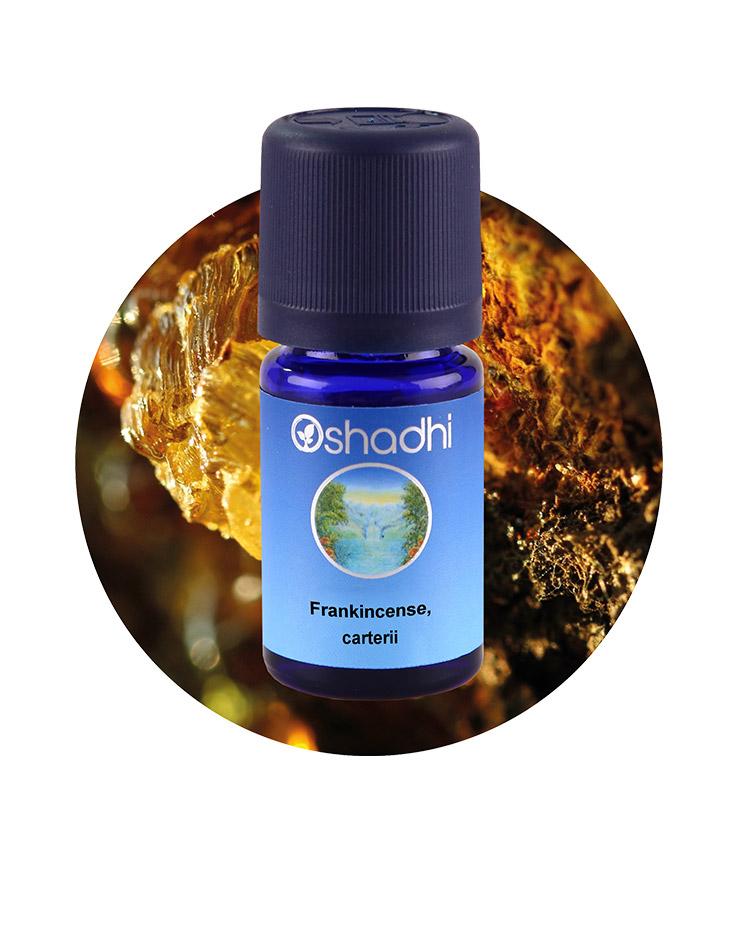Frankincense Essential Oil
Experience the timeless allure of Frankincense Oil. Derived from the wild-harvested resin of Boswellia carterii, this exceptional oil originates from the mystical lands of Somalia, capturing the essence of nature's sacred embrace.
Crafted through a meticulous distillation process, our Frankincense Essential Oil encapsulates the true essence of this botanical treasure. Its rich and woody aroma makes it a cherished choice for aromatherapy enthusiasts and those seeking moments of tranquility and spiritual connection.
Frankincense Oil is celebrated for its potential therapeutic benefits. With its grounding and soothing properties, it has found its place in holistic practices. Embrace yourself in its calming ambiance of serenity in your daily rituals.
Sourced from the enchanting lands of Somalia, our Frankincense Essential Oil carries the spirit of this captivating region. Feel the sacred notes it brings, as you embrace the legacy of centuries-old organic botanical wisdom.
Elevate your senses with the pure embrace of Frankincense Essential Oil, distilled from the resin of Boswellia carterii. Immerse yourself in its transformative fragrance and let it transport you to the heart of Somalia's natural beauty. Experience the essence of sacredness with Frankincense Oil.
About the Plant
Boswellia carterii, commonly known as Frankincense, is a botanical treasure that has been revered across cultures and generations for its profound spiritual significance and traditional uses. Native to the arid regions of the Arabian Peninsula and East Africa, this resin-producing tree has played a pivotal role in ancient rituals and healing practices.
In traditional practices, the resin of the Frankincense plant has been revered for its potential health benefits. Used for centuries, it was often burned as incense during religious ceremonies to purify the air and create a sacred atmosphere. The aromatic smoke was believed to uplift the spirit, promote focus, and enhance meditation.
Frankincense's aromatic essence and potential therapeutic properties made it a prized ingredient in traditional healing practices. The resin was often used in incense, balms, and salves, believed to support respiratory health, soothe occasional discomfort, and promote overall well-being.
Beyond its physical uses, Frankincense held profound spiritual and cultural significance. In ancient cultures, it was considered a symbol of divine connection and a conduit for communication with the divine. Frankincense was offered as a gift to deities and used in rituals to seek protection, blessings, and guidance.
Boswellia carterii, the Frankincense plant, stands as a testament to the enduring bond between nature and human spirituality. Its traditional uses, deeply rooted in the wisdom of ancient cultures, continue to inspire admiration and reverence for its contributions to spiritual practices, well-being, and cultural heritage.
USE: Today's cosmetics industry offers a number of products containing frankincense, as these are said to prevent wrinkles and blemishes and provide optimum care for the skin. Recipe: Face mask 1 tablespoon of healing clay 1 teaspoon of honey 2 drops of frankincense oil 1 drop of tea tree oil 6 drops of almond oil a little water Mix the ingredients in a bowl until a sludgy consistency is achieved. Then apply to the skin of the face and leave on for 15 minutes. Rinse off with water and pamper your skin with your usual moisturizer. If you suffer from extremely dry skin, you can replace the healing clay with Greek yogurt and the tea tree oil with niaouli oil.
HISTORY: In ancient Egypt, frankincense was described as a "substance capable of inducing a divine state." It was found in the tomb of the Egyptian king Tutankhamun, who died around 3330 years ago. At that time, incense was used to allow the soul to find its way back to the higher dimensions. The Roman Empire was also very fond of the sacred resin known as olibanum. A bowl of incense was found in almost every household to protect against evil, honor the gods, and remove unpleasant odors. Hippocrates, the most famous physician of ancient Greece, used frankincense to treat wounds, stomach and digestive complaints, and respiratory diseases. Indian Ayurveda has also been using frankincense for over 5000 years.
It was revived as an Ayurvedic remedy by Maharishi Mahesh Yogi in particular: The three magi from the East, who had come to see the newborn baby Jesus, brought incense as one of their gifts. For the Christian church, incense still symbolizes prayer ascending to God, worship, and purification.
Keep away from heat and sunlight. Keep out of reach of children. Avoid contact with eyes and mucous membranes.
How to use Essential Oils
Find out more about how Essential Oils can be used and the different application methods:
https://oshadhi.com/pages/how-to-use-essential-oils

